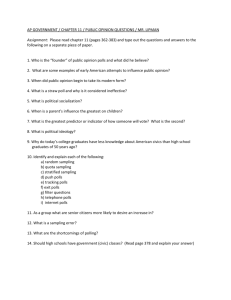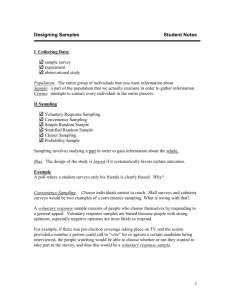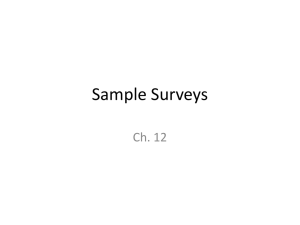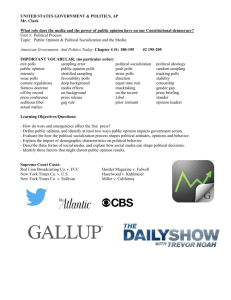day3 - University of South Carolina
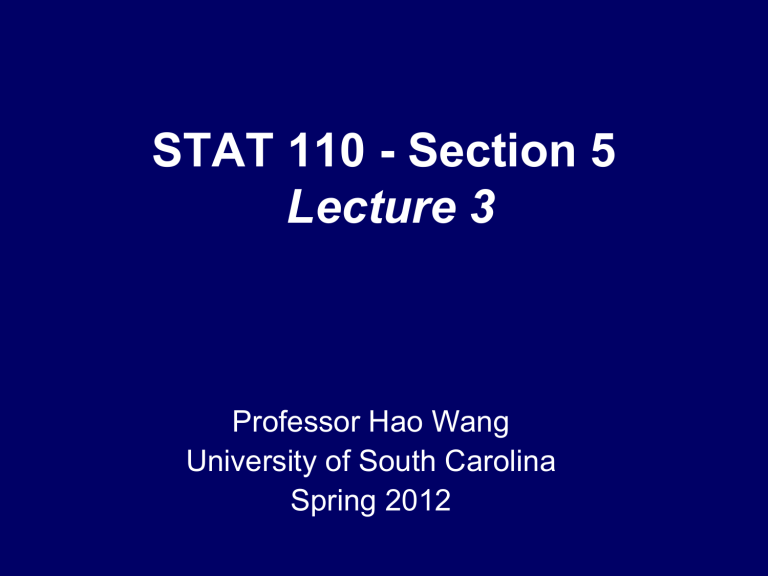
STAT 110 - Section 5
Lecture 3
Professor Hao Wang
University of South Carolina
Spring 2012
Chapter 2 – Samples, Good and Bad
Want to make a statement about a large group of individuals
Sometimes it is not practical to measure each individual in the population.
Choose a sample of individuals to represent the population
Why wouldn’t this work?
Some magazines used to conduct presidential election polls by asking their readers who they planned to vote for.
This wouldn’t work if the readers of the magazine weren’t like the majority of the people in the country.
In this case, the result of who they would vote for probably wouldn’t be like the result for the entire country.
Bad Samples
voluntary response sample – chooses itself by responding to a general appeal
Example 1: Write-In Polls
Ann Landers once asked the readers of her advice column, “If you had it to do over again, would you have children?” She received nearly 10,000 responses, almost
70% saying “no.”
Is it true that 70% of parents regret having children?
What about this, why wouldn’t it work?
No! This is an example of a voluntary response sample, in which the respondents are often those who have a strong and negative opinion
This sampling method caused the polling results to be biased (toward a negative opinion on raising children).
Bad Samples
convenience sampling – selection of whichever individuals are easiest to reach
Example 2
A student at the university is conducting a survey to find the opinion of her fellow students on the availability of student parking on campus. She stands outside of a dorm and polls fellow students as they leave the dorm. This sampling design is
A.Voluntary response
B.Convenience sampling
Bias
biased – systematically favors certain outcomes
Which of these is bias?
A – Your scale is always off somewhere between
2 pounds too light and 2 pounds too heavy, but there’s no pattern as to where in between -2 and
+2.
B – You scale is always off somewhere between
5 and 9 pounds too heavy, but there’s no pattern as to where in between 5 and 9.
C – Neither
D - Both
Simple Random Sample (SRS)
simple random sample of size n – consists of n individuals from the population chosen in such a way that every set of n individuals has an equal chance to be the sample actually selected
The easiest way to think about this is to place names in a hat (the population) and draw out a handful (the sample).
The Main Point
On average, a simple random sample will be representative of the population for EVERY variable of interest.
Problem 1
A university has 1000 male and 500 female faculty.
A survey of faculty opinion selects 100 of the 1000 men at random and then separately selects 50 of the
500 women at random. The 150 faculty members chosen make up the sample.
• Explain why this sampling method gives each faculty member an equal chance to be chosen.
• Why is this not an SRS?
A Computer Is Much More Efficient!
There are also a variety of Applets on-line that can do it as well.
http://www.dougshaw.com/sampling/




